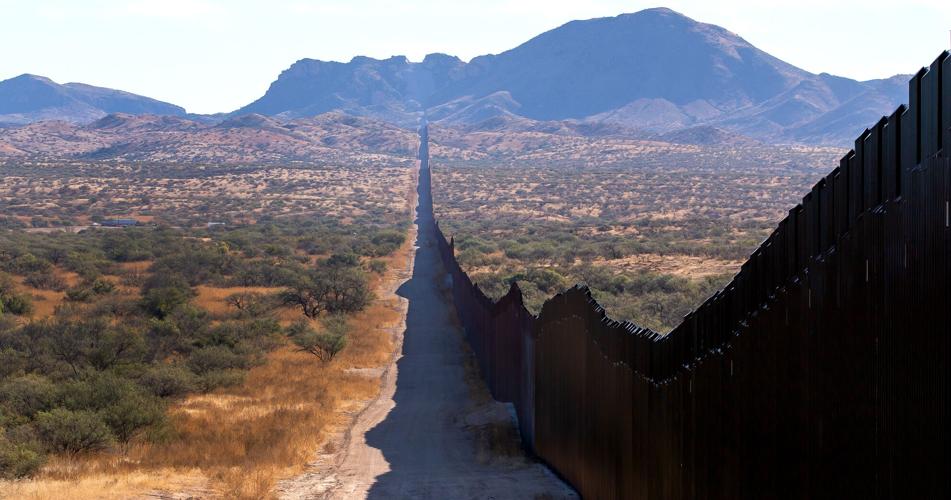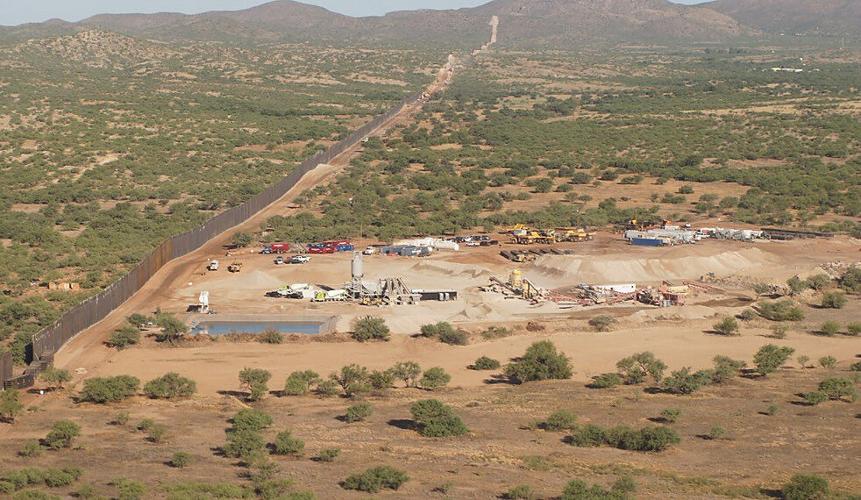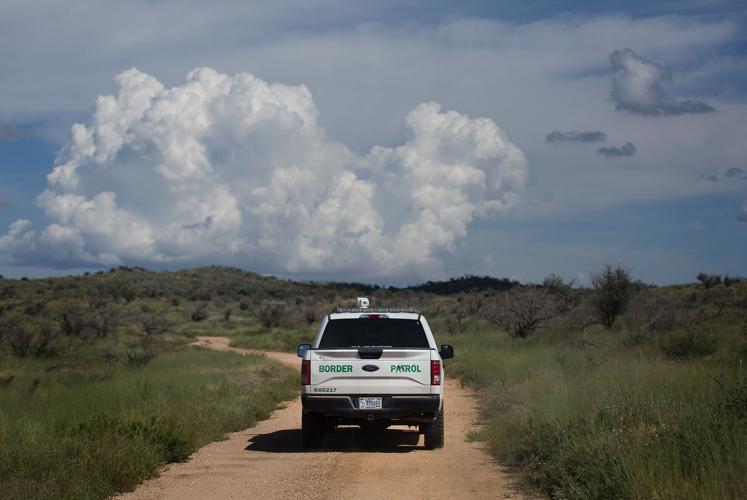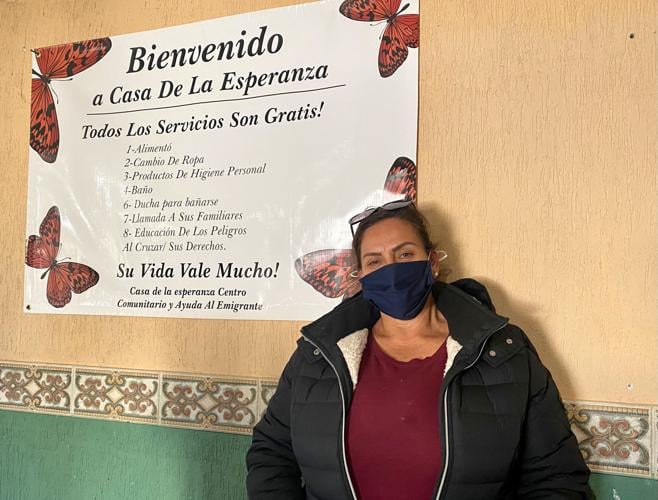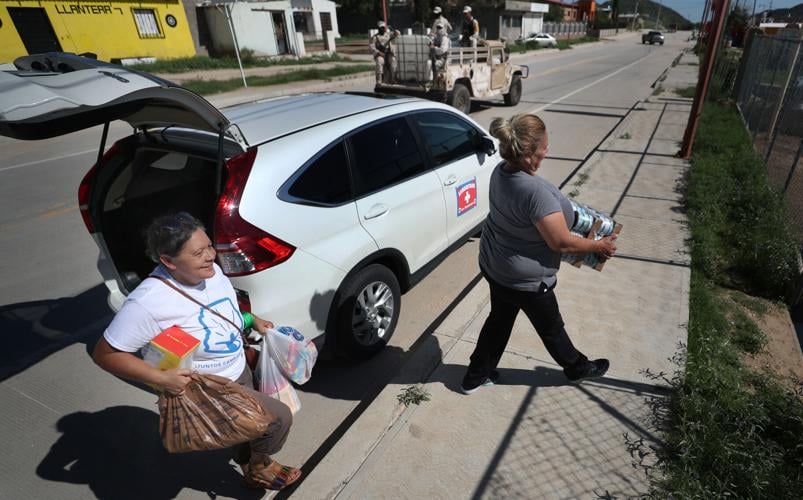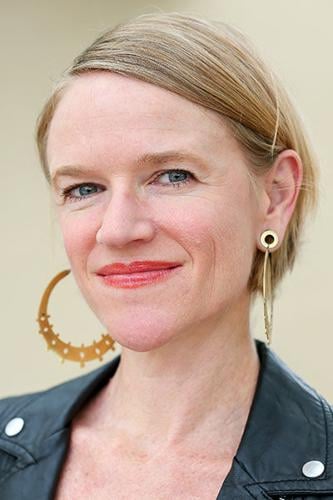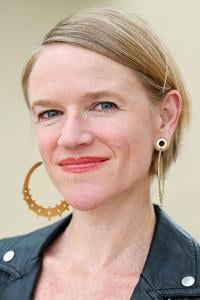Arizona Daily Star border reporter Danyelle Khmara speaks to people who hold a stake in the borderlands — who work, live, travel and migrate in the Arizona-Mexico border region or whose lives are affected by immigration and border policies.
Danyelle Khmara, reportera de Frontera en el Arizona Daily Star
In this occasional series launching today, Khmara brings readers the voices and stories of those people to illuminate what life is really like on the border.
Here she talks to two women who live on opposite sides of the border at Sasabe, about 70 miles southwest of Tucson: a rancher in Arizona and a migrant-aid worker in Sonora.
Protector of wildlands
Driving onto Melissa Owen’s 640-acre ranch, first you’ll pass a sign that says “Border Patrol welcome.” Then you'll see a small helicopter that she and her husband fly over the border wall, documenting the gash it cut in the wildlands she’s spent nearly three decades working to protect.
Owen knows the border region around Buenos Aires National Wildlife Refuge as well as anyone. For the past 18 years, she’s lived on her ranch, 3.5 miles from the border, near Sasabe, Arizona. Owen owns the ranch with her husband, who spends every other week in Tucson, where he works as a doctor.
She variously volunteered for or was an employee at the wildlife refuge from 1995 to 2003. Now, she spends her time caring for the wildlands on her ranch, working to enrich the habitat and advocating for the surrounding lands that were disturbed by border wall construction.

Owen also organizes the “All the Way to the Border” Arizona 286 clean-up every year in January. This year was the first year it did make it all the way to the border — 45 miles, 219 bags of trash and 101 volunteers, from diverse groups such as humanitarian aid organization Humane Borders, the Altar Valley Conservation Alliance, the National Wildlife Refuge, local community Caballo Loco Ranch, Arizona Game and Fish, and Altar Valley Middle School in Three Points, as well as individuals who live along the highway, people from Tucson and those who just show up wanting to help.
In this Q&A, Owen talks with the Star about what it’s like to live on the border, her conservation work and her thoughts on border policy and the border wall.

Melissa Owen on her property.
Many people think the border is really dangerous. Do you feel like you're in any danger here?
Borders are dangerous places. It doesn't matter whether it's the United States-Mexico border or the border between Syria and any other country or Ethiopia and any country — borders are dangerous places. It's a trade off for me. Yes, I'm not as safe as I would be in a gated community in Scottsdale. But I don't want to live there. I want to live here. So I'm willing to accept a certain amount of uncertainty.
I have had to chase men out of my house. They weren't armed with guns; they had knives. I suspect they were drug carriers and were going back to Mexico, and they just dropped in to see if there was anything they could pick up to take back. I've had episodes that were uncomfortable. But it's a trade off.
What happened after you chased them out?
I called Border Patrol. They were here within five minutes, as they always are. They are so receptive to me. They know I'm here by myself. They tracked one of the men back to Mexico, back to the border.
Then I called the sheriff, and they got here after two-and-a-half hours, and they wanted to dust for fingerprints — if you're down here, you're on your own.
There are lots of other things that are dangerous, too. We have rabid skunks. I could fall down and break my ankle, and nobody would find me for a week. So it's not like, say, living in Phoenix or living in many places in Tucson. If I call for help, to get an ambulance here is going to take — I don't even know — two hours? So that's just part of the deal.
What are your interactions like with migrants who come onto your property?
I call Border Patrol. Border Patrol is set up to help them if they need food or water or they need medical attention. If they're trespassing on my ranch, they are breaking the law. I want them apprehended, and I want them to get whatever kind of attention they need.
In my experience, most of the people who are coming across now want to be found; they have come to turn themselves in.
What would you like to see happen with immigration policy?
We should have an organized plan; we should have an immigration policy that is sane and fair. And it should look not just at repelling people from our border, but doing things to keep them in their home countries.
I don't think anybody wants to walk here from Guatemala. I think people would be much happier to stay on their farms and in their homes. It seems to me that it would make more sense to work on policies that would help keep them there rather than just building barriers to turn them off.
I think part of the frustration with what's happening down here is that the people who are in power and the people who actually can make the rules — impose the restrictions or lift the restrictions as the case may be — don't listen to people who actually live on the border. People in North Dakota, people in Washington, D.C., and other far off places don't know what it's like to live on the border, and they don't care.
The same people with the same views get all the news coverage because they're willing to talk and be interviewed. That makes it seem as if we all have the same opinion, and we do not. That's frustrating to see.
Also, there's just such a hodgepodge of statistics. The national policy on the border and immigration is a knee jerk policy. We get all excited one day, and we throw a lot of money at it, and we make a lot of statements. And then six months or a year later, it's completely different, and it's a whole bunch of different statements, and there's no coherent policy.
Ten years ago, this was kind of like the Wild West. It really wasn't pleasant. It was dangerous. Things are much, much better, and things could be even better if there was any sort of organized mandate to do anything. But as I say, there isn't. Every week there's a different plan. And so nothing really works.

Melissa Owen took these photos from her helicopter of a border wall construction site on the Buenos Aires National Wildlife Refuge on Aug. 10, 2020, where contractors were also mixing cement to fill the metal bollards that make up the wall.
What do you think of the border wall?
I think if most people in the United States saw the ecological destruction and the waste at the border, they would be appalled and they would want it stopped immediately. I'm sure some people will think, ‘Oh, that's a good looking fence; we need more of that.’ But even if you don't care anything about preserving wildlands or helping wildlife, billions of dollars were totally wasted on this project.
First of all, you can cut through it with a power saw. And it was so poorly administered and the whole process was so corrupt — there was a huge rush to get as many miles finished as possible so the contractors could get paid, and there are just gaps all along the wall. All that money could have gone towards something positive and something that would make a difference. But instead, it was poured into an ill-conceived and pretty much useless project.
And what would you like to see the Biden administration do with the upcoming remediation to clean up after the border barrier projects?
I would like to see some science. I would like to see a task force or a committee of people who know about wildlands restoration, who know about the biology of this area, instead of politicians who have a political agenda. I would like to see people who know and understand about the land at least have a voice in what happens. But I don't think that is going to happen.
(In June, the Department of Homeland Security released a proclamation saying "DHS intends to enter into robust and substantive consultation with stakeholders, including affected landowners, tribes, border community residents, their elected representatives, and interested non-governmental organizations and advocates. Such consultation will inform environmental planning and execution of the border wall projects." Owen says she is still looking forward to these conversations.)
What do you do out on your property? And why is this land out here so important for the wildlife in this region?
We are working constantly to enrich and protect for wildlife. At this point in our planet's history, any wildlands, any open lands are important. I could go into a long story about desert grasslands, which is what these are. But all you have to do is drive west from Tucson and the land is developed now from Tucson to Three Points. It's just expendable housing. It's poorly built — built in a floodplain most of it. That used to all be open land. So any wildlands that we can protect is vital and gets more so every single day.
Can you tell me about the highway cleanup that you do every year?
This was our seventh year to do it. I've been doing highway cleanups on Highway 286 since 1997. But in the last seven years, I've just been doing one big cleanup. We usually do it the last Saturday in January, and our goal is always to clean all 45 miles of Highway 286, from the north end to the south end. We do it with volunteers, and it's grown every year.
It's a way to get trash off a beautiful scenic highway. But also it's a way to get people together who might not feel like they could work with each other under normal circumstances. They might have different ideas about wildlands, different ideas about who's responsible for a public roadway, for example. But we can all get together and work to make our community more beautiful. So that's part of it too. And, of course, we have fun.

Alma Cruz of Casa de la Esperanza in Sasabe, Sonora.
Serving the people
Alma Cruz is attending to the half-a-dozen men at Casa de la Esperanza in Sasabe, Sonora, on a recent Friday afternoon.
The men were recently deported to the small Mexican border town. Some of the migrants are waiting for a ride to the city of Altar, which Cruz is arranging. Others are waiting for a hot meal or shower.
The help center, a few blocks south of the international border, is supported by donations from numerous humanitarian aid groups in Tucson and Southern Arizona.
Casa de la Esperanza opened in May of last year, in response to large numbers of migrants being deported from the United States to the small town. Those numbers have since come down, and the center now serves about 20 to 40 people a day, including people who live in the town, migrants who got deported and dropped off there, and migrants who are planning to cross the border.
The center offers food, a change of clothes, personal hygiene products, a shower and education on the dangers of crossing the border and on migrants’ rights. The center has a big map on the wall, made by a member of humanitarian group Tucson Samaritans with data from the Pima County Medical Examiner, that has a red dot for every place in the desert where human remains have been found from migrants who died attempting the treacherous desert crossing.
With a population of about 2,500, Sasabe has few resources to help migrants who are left there after being deported. The first place migrants encounter when deported into Sasabe is a small Grupo Beta office, which is run by the Mexican government and offers them water, basic medical aid and information.
Cruz works at Grupo Beta in the mornings and Casa de la Esperanza in the afternoons.
One of the closest cities that has more resources for migrants is Altar, about 70 miles south with a population of about 9,500.
One of the men in the center is limping. Cruz gives him some over-the-counter pain medicine, wrapping a small handful in a napkin so he has some for later.
She tells another man if he gets hungry to let her know; there’s some soup left over from yesterday’s meal that she can heat up.
He asks to use the bathroom. Adelante, pasale, she tells him — go right ahead.
People used to be able to use a phone at the center, but Cruz says that service is no longer being offered because the cost of international calls was too high.
Cruz holds her phone to her ear, and her long fingernails are sparkling, gem encrusted — done up by a woman who lives in town. Through a navy blue cotton mask she tells the man on the phone that there are five people who need a ride to Altar.
Rides to Altar are among the many additional services the center pays for. It also helps with travel expenses for migrants from other countries who want to get home.
The ride to Altar arrives about 20 minutes later, and the men pile into the back of the small truck for the one-and-a-half hour drive south.
There is nothing in Sasabe, Cruz says; there’s not even a bus. She doesn’t understand why people are deported there when there are no services and nowhere for them to go.
Cruz talks more with the Star about the changes she’s seen in her year working at the center, what her job is like working with migrants who’ve just been deported, and what it’s like to live in the small Sonoran border town.
How have you seen things change in the last year?
In the last year, they were deporting a lot of people. That’s why they opened this center.
In the beginning, not that many people showed up because they didn’t know about the center. But over time, people began to hear about it and they started arriving. Now people know about it, and they come here to eat or to take a shower or to get some clothes or shoes.
Where are the people from? And do families with children come in or is it usually just men?
It’s usually men. Different kinds of people come, but it’s rare to see small children. Sometimes solo women show up. Children have come through here, but not very often. They’re from all over — Guatemala, Nayarit, Oaxaca, El Salvador.
Do people usually show up here right after being deported?
Yes, sometimes. And sometimes they go to Altar or they stay here in town for a day and go to a hostel or a hotel, and they might stop by for a shower or to eat something.
We tell people about the dangers of crossing. They can see the map we have here where all the red represents deaths. I explain it to them.
Anyway, people are going to continue — they’re going to continue trying and trying. And we’re here to lend them a hand when they’re in need because many of them are from far away or from another country, and they’re vulnerable and they need help.

Dora Rodriguez, left, and Alma Rodriguez carry supplies into the Casa de la Esperanza as a Mexican Army patrol drives past in Sasabe, Sonora.
Do they talk to you about what they’ve been through?
Yes, how they’ve suffered. Sometimes they haven’t even eaten for many days. There are many things they suffer through to try and enter your country. They’re trying to migrate to have a better life.
But what do I know? We’re just here to serve them.
Many want to go back to their country. We help them get to Altar, and in Altar there are people who can help them coordinate how to get back to their country. If people want to go back to their country — it might be Guatemala or Honduras or El Salvador — they can help them with the trip.
And do many people who come here try to cross the border again?
There are some who do, and others who don’t want to, who just want to go back. Either they’ve already tried numerous times or they just don’t want to. They’ve suffered so much, and they just want to go home.
What condition are people in when they get to the center? Are they ever injured?
Sometimes they are a little hurt, on their legs, or they fell. But we help heal them here. We can put an ointment or give them a pain pill, or they can have a shower or clean socks or underwear or hot food. But they just stop through; they can’t stay the night here. It’s not a hostel; it’s just a short stop.
Was it hard to do this work during the pandemic?
Well, we have masks, so people can put one on. And we all take precautions for ourselves.
Are you vaccinated?
I am. I got the second dose, but I haven’t gotten the third yet. I haven’t been able to find one here in town. There were doctors and nurses who came here to do them. I think they’re going to have more soon, and I’ll get the third dose.
How did you start working here?
Well, I worked in Grupo Beta. And because migrants are always arriving because they were deported, the people who opened this place started coming by, the Samaritans, and they put a table outside with clothes and some food. And then they started to look for a place to serve people, and Grupo Beta recommended me.
Now there are other people working here. There’s a woman who’s here in the morning. She works in the morning, and I work in the afternoon. And on Saturdays and Sundays another woman works here.
The port stays open until 8 on Friday and Sunday, and so she stays until 8. In case people are deported here and they’re cold or hungry, she can attend to them.
Do you like your work?
Yes, it’s really nice to serve people.
Where are you from?
I’m from here. I’ve lived here my whole life. I like it; it’s very mellow here.
And how have you seen the border here change throughout your life?
Before, no one was deported here. We started seeing people being deported here over the past two years.
Has that changed the town at all?
Not really. Maybe the little hotels around here have gotten a little money from the people who stay, but the town hasn’t made any changes because of them.
And do you plan on living here the rest of your life?
No, I don’t think I’ll always stay here, but I have my house here. I have three grandchildren living with me, along with my daughter. They’re little — 7, 5 and 2.
Before, I had a U.S. visa, but it expired. I haven’t crossed over since 2010, since my visa expired.
I don’t know very much over there, mostly just Tucson. But I have a son who lives in Tucson and is a U.S. citizen, so maybe in the future I could go over there — or just stay here.


